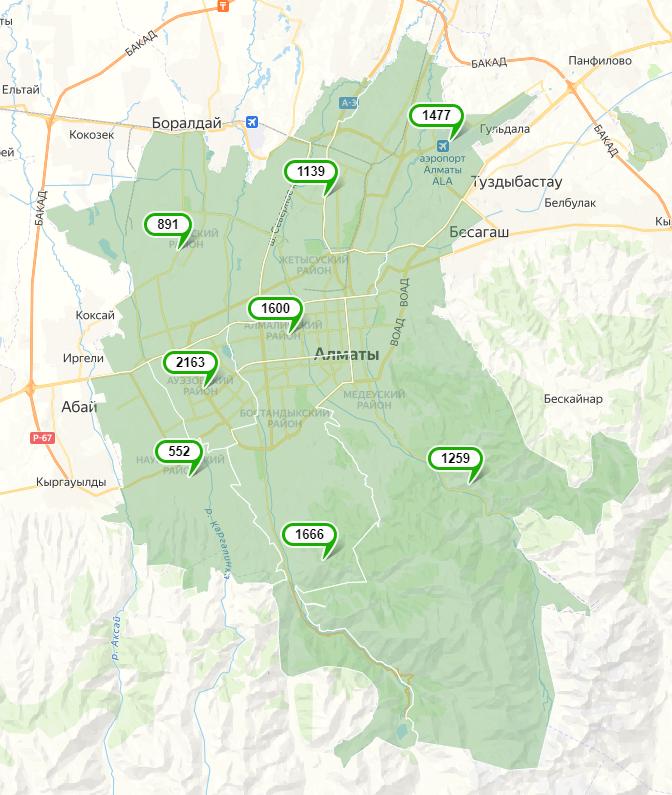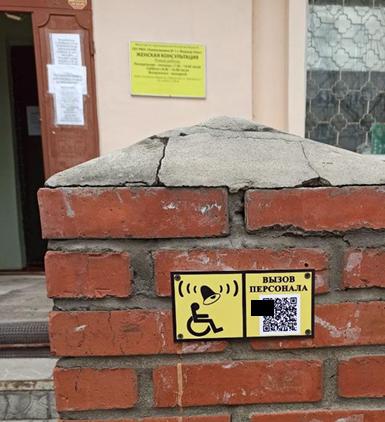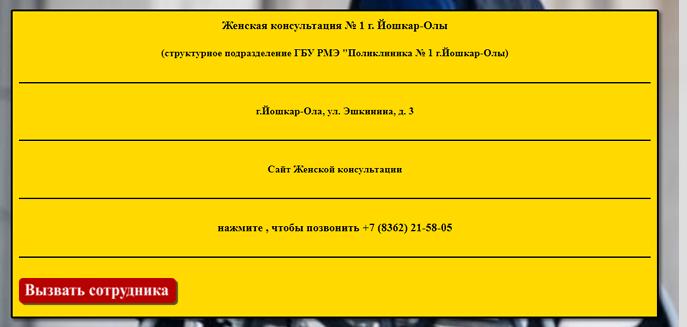Introduction of QR Codes for Building Access for People with Disabilities
Today, over 60.7 thousand people with disabilities (8.5% of the population) live in Almaty, including 52.9 thousand adults and 7.8 thousand children. Of these, about 2.2 thousand people with disabilities use wheelchairs1.
However, according to the Interactive Accessibility Map https://inva.gov.kz/ru, there are 10.7 thousand objects in Almaty that are fully or partially adapted for people with disabilities. Of these, only 1.6 thousand objects are adapted for wheelchair users.
Figure 1. Number of Accessible Objects for People with Disabilities (Data from the Accessibility Map)

The problem of adapting buildings for people with disabilities is one of the key issues in implementing a policy for an accessible and friendly city for all. The main reasons include the lack of strict regulatory requirements and the existence of «loopholes» in the regulatory legal acts that mandate adapting objects for people with disabilities, as well as the financial costs for reconstruction and the installation of special equipment by property owners and developers.
One potential solution could be the introduction of QR codes for building access for people with disabilities, which would significantly improve their quality of life and make it easier to access public buildings in the city.
In 2020, the Republic of Mari El (Russia) developed an automated service for low-mobility citizens to call for assistance. The service uses a QR code placed on the exterior of the building's entrance, which is linked to a private channel on the Telegram messenger for the staff.
The principle of the service is as follows: a low-mobility citizen scans the QR code, after which the message is sent in real time to the organization's private channel on the messenger, and the staff organizes assistance to the citizen to help them enter the building.
After sending the message, the citizen has access to a web page with basic information about the organization, contact numbers, websites, etc., which they can use to obtain further details.
The advantages of this call button option are as follows:
-
No need for complex wiring installation or the necessary call-reception devices (in the case of a call button placed at the entrance to the building).
-
Mobility for staff, as calls are received on mobile phones.
-
The possibility of connecting multiple responsible staff members to the service.
-
No financial costs for equipment for the call service.
As part of a pilot project, this service was implemented in two municipalities of the Mari El Republic. Over 40 objects have been connected to the service, including clinics, consultations, administrative buildings, schools, libraries, and sports facilities.
Figure 2. Service Interface


Recommendations for Implementation:
-
Conduct staff training on using QR codes and providing assistance to people with disabilities.
-
Ensure the accessibility of QR codes for people with various types of disabilities, including those with visual impairments or motor disabilities.
-
Provide consultative support and feedback to improve the process of implementing QR codes for people with special needs.
Introducing QR codes for building access for people with special needs represents a promising practice that will create a more friendly and accessible environment for all categories of the population who need assistance accessing buildings (people with disabilities, elderly people, parents with strollers, people with temporary mobility difficulties, etc.).
This is presented as a proposal.
1 Data from the Information Portal «Social Protection of People with Disabilities» Ministry of Labor and Social Protection of the Republic of Kazakhstan https://inva.gov.kz/ru/highcharts












